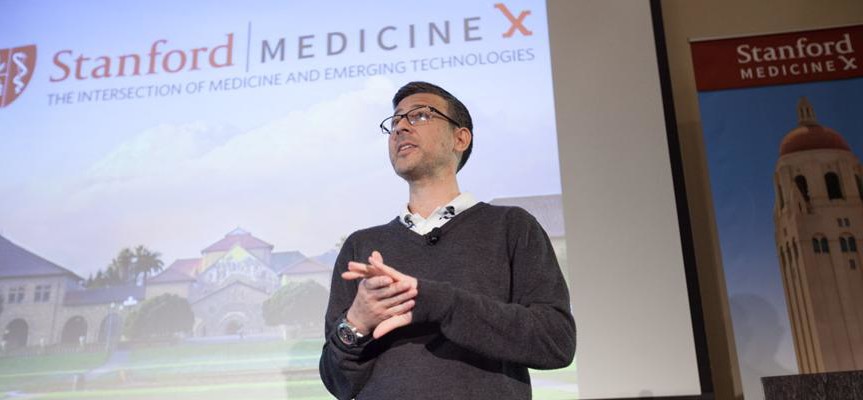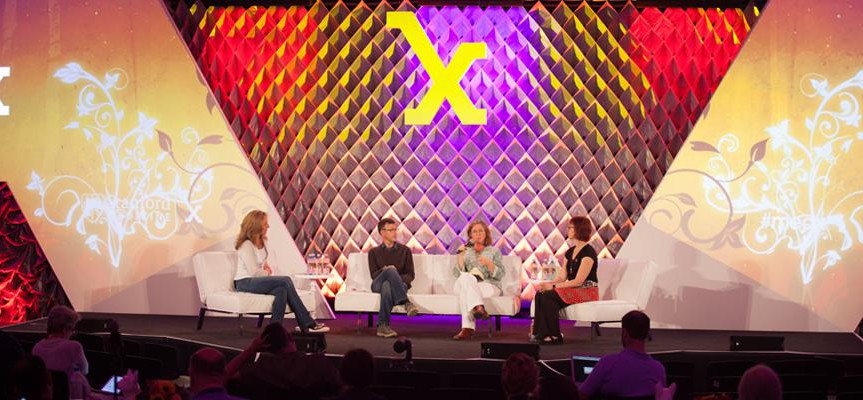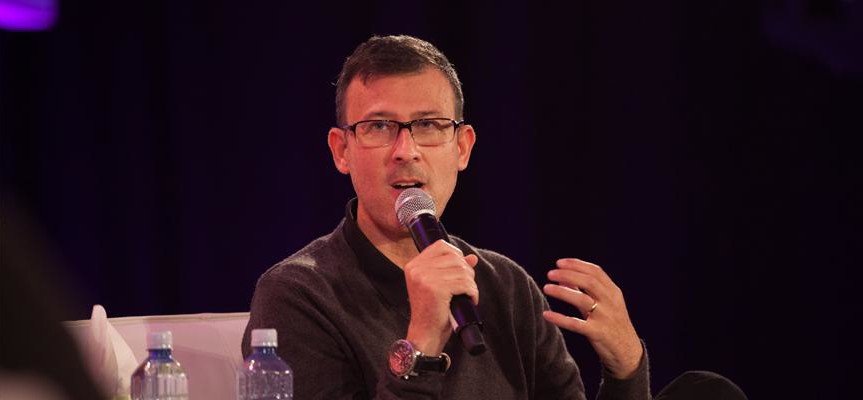Everyone Included™ case study:
How 11Health is revolutionizing stoma care
Everyone Included™ creates a culture where everyone is trusted and respected for the expertise they bring to the future of health care. This blog series shines a light on individuals and organizations bringing successful innovation to health care using Everyone Included™ principles.
What is 11Health?
 11Health is a startup connected medical device company whose first product is a patent-pending sensor, The Ostom-i Alert, a discreet and innovative device that alerts patients on how full their ostomy/stoma bags are. The device sends Bluetooth alerts to a mobile app telling you that your bag is filling up, capturing guidance information about volume and timings, and allowing you to share that information with your care team. This data is stored securely on the 11Health website, allowing easy access by both patients and their clinical partners. The first prototype was completed in 2013, with 11Health winning a Gold Medal for its mobile app at HDA2015. In the last six months 11Health has been working with 11 leading hospitals, with indications that number will grow to 31 by the end of the 2nd quarter of 2016.
11Health is a startup connected medical device company whose first product is a patent-pending sensor, The Ostom-i Alert, a discreet and innovative device that alerts patients on how full their ostomy/stoma bags are. The device sends Bluetooth alerts to a mobile app telling you that your bag is filling up, capturing guidance information about volume and timings, and allowing you to share that information with your care team. This data is stored securely on the 11Health website, allowing easy access by both patients and their clinical partners. The first prototype was completed in 2013, with 11Health winning a Gold Medal for its mobile app at HDA2015. In the last six months 11Health has been working with 11 leading hospitals, with indications that number will grow to 31 by the end of the 2nd quarter of 2016.
Everyone Included™ as a framework for success in new health care ventures
Michael Seres, the founder of 11Health, talks about how Everyone Included™ principles guided the product’s genesis from conception to successful commercial launch:
“A patient founded 11Health, so underpinning everything the company does is a deep understanding, from experience, of the unmet need of the patient. However, for our business to deliver on its promise it has to have input and buy-in from every compass point in the healthcare landscape. Unless everyone is on board, our belief is that you cannot be successful. There is no point in creating the best technology for a patient if healthcare professionals won’t use it, hospitals don’t see the benefit, and insurers won’t pay. We decided that we needed to ensure our company understood the needs of everyone involved in the care delivery process before we launched.”
The Everyone Included™ co-creation process
Patients and caregivers help focus efforts on problems that matter most to those on the frontlines of care. Since a patient led the development of 11Health through co-creation with providers and technologists, its technology and product development mission aims to solve real issues for patients and their families. Everyone Included™ values and respects the unique expertise each individual brings to the co-creation team. In building the technology at the prototype stage, Seres found that his surgeon and nutritionist were instrumental in understanding what data was needed from the device to help providers better collaborate and create care with patients.
Patient-led but co-created to help everyone on the medical team
Improving the quality of lives for patients is 11 Health’s primary focus. When they started the prototyping process, Seres and his team discovered that health care professionals treating ostomy patients were most interested in the sensor’s output data. They didn’t want “big data” to analyze, they wanted only the relevant data to help them care for their patients. That turned out to be two key data points: volume of output and timings. “So that was the functionality we baked into the product prototype,” notes Seres
Navigating the FDA
The next compass point in the process was finding out what the regulatory requirements were for the device. Seres and his team engaged the US Food and Drug Administration (FDA) and the Centers for Medicare & Medicaid Services (CMS) to understand what regulatory requisites were for devices like Ostom-i Alert as the product was being prototyped. Specifically, the 11Health team asked “What lab test, what studies, and in what format?” 11Health was then able to build all these requirements into their product ahead of taking it to market. Seres says, “The reason the relationship worked is that we were able to foster a culture of empathy and understanding between us as identified in the EI™ Leadership principles. We understood that we had to comply to FDA rules but at the same time they appreciated we didn’t have a history of knowing the process but were willing to listen and learn.”
Importance of payer and insurance buy-in
The last compass point – it could be called the North Star – was figuring out who would pay for the device. Since it was a medical device, it qualified for reimbursement under CMS and private insurer rules if all the required criteria were met. Seres and the 11Health team spoke to CMS early in the process to learn if there was an existing code or category their product fell under, and took time to explain the functionality of the device to the regulatory team at CMS.
Seres talks about the challenges of this part of the process: “CMS were keen to make a decision very quickly that ultimately might not have helped the business. This created some tension, but there was an implicit understanding that conflict can give rise to creative solutions. CMS rules mandate that ostomy products be covered under the section about replacement body parts. However, an ostomy pouch is a collection vessel, not a replacement part. Our sensor does actually replace nerve endings, as it allows the patient to set an alarm when there is output as opposed to alerting when a pouch is already full and overflowing. We were able to reach an understanding about the actual working of the device and, as a result, secured the relevant insurance reimbursement coding.”
What resulted was a product that was commercialized quickly, and is gaining traction at speed. 11Health has used social media and digital marketing platforms to talk to patients about the device in real time, getting their feedback on its utility and its flaws. At the same time, when selling into hospital systems, the 11Health team has been able to answer the hospital staff’s key questions and eliminated barriers to entry. They’re able to demonstrate value analysis, have established a funding model, and are delivering a device that healthcare professionals understand the need for, and enthusiastically adopt.
Every part of the healthcare compass – patients, clinicians, developers, regulators, product designers, healthcare system administrators, researchers – has been involved in every step of the process.
Patients as leaders
In commenting on the role of leading the diverse 11health team through Everyone Included™ design, Seres noted the importance of creating a culture of empathy and trust.
“Underpinning the way I work is a firm belief that there needs to be mutual respect and mutual empathy. I try to be a collaborative leader and look to surround myself with people who challenge me, as I believe you get better outcomes that way. This is very much the EI™ leadership style. This is a natural way for me to work, but I respect that is not the same for everyone. I think patient leaders have to be brave and fearless. It takes great bravery to be flexible, and courage to allow diversity. Patients often get a chance to participate, but rarely to lead. EI™ allows us to lead in a style that is very much akin to being a patient.”
Seres offers this caution to anyone who might think Everyone Included™ is an easy answer:
“There is a real danger that you end up having to do everything by committee, which makes decision making cumbersome. You have to be very clear about what you want to do, and you have to have a strong vision. This is particularly true for a patient-led team, with team members not used to hearing the patient or caregiver voice in a design process. Listen, engage, take on board all opinions, but ultimately you have to take action. You can’t make everybody happy every time. That doesn’t mean the principle has failed, it means you have to be pragmatic.”
Michael Seres shares his call to action:
“In any industry, you would never start a business or develop a new product without all stakeholders involved. So why on earth would it be different in healthcare?
You cannot create the environment of empathy and trust that healthcare requires without Everyone Included. These principles will heal healthcare by driving connection across the continuum of care.”
About Everyone Included™
Everyone Included™ creates a culture where everyone is trusted and respected for the expertise they bring to the future of health care. This blog series shines a light on individuals and organizations bringing successful innovation to health care using Everyone Included™ principles.


